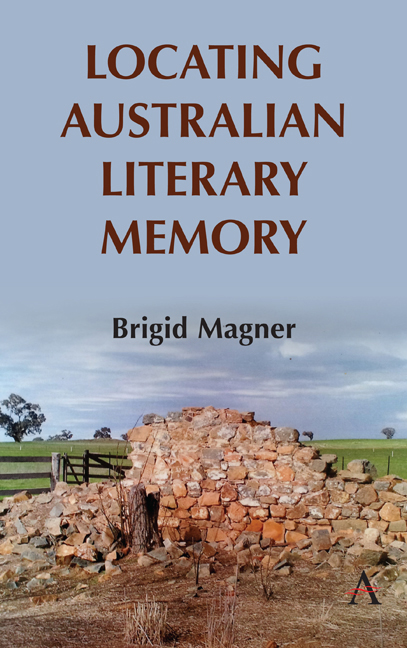Book contents
- Frontmatter
- Contents
- List of Illustrations
- Acknowledgements
- Introduction: Remembering Absent Authors
- Chapter One Adam Lindsay Gordon's Grave
- Chapter Two Joseph Furphy in the Riverina
- Chapter Three Henry Handel Richardson and the Haunting of Lake View
- Chapter Four Henry Lawson Country
- Chapter Five The Multiple Birthplaces of A. B. ‘Banjo’ Paterson
- Chapter Six Nan Chauncy's Sanctuary
- Chapter Seven Living Memorials: The Houses of Katharine Susannah Prichard and Eleanor Dark
- Chapter Eight Statue Mania: P. L. Travers and the Appeal of Mary Poppins
- Chapter Nine Kylie Tennant's Hut
- Chapter Ten The David Unaipon Monument at Raukkan
- Conclusion: Towards an Expanded Repertoire of Literary Commemorations
- Notes
- Index
Chapter One - Adam Lindsay Gordon's Grave
Published online by Cambridge University Press: 10 December 2019
- Frontmatter
- Contents
- List of Illustrations
- Acknowledgements
- Introduction: Remembering Absent Authors
- Chapter One Adam Lindsay Gordon's Grave
- Chapter Two Joseph Furphy in the Riverina
- Chapter Three Henry Handel Richardson and the Haunting of Lake View
- Chapter Four Henry Lawson Country
- Chapter Five The Multiple Birthplaces of A. B. ‘Banjo’ Paterson
- Chapter Six Nan Chauncy's Sanctuary
- Chapter Seven Living Memorials: The Houses of Katharine Susannah Prichard and Eleanor Dark
- Chapter Eight Statue Mania: P. L. Travers and the Appeal of Mary Poppins
- Chapter Nine Kylie Tennant's Hut
- Chapter Ten The David Unaipon Monument at Raukkan
- Conclusion: Towards an Expanded Repertoire of Literary Commemorations
- Notes
- Index
Summary
Anglo-Australian poet Adam Lindsay Gordon attracted a cult following from his death in 1870 up until the mid-twentieth century. Until Henry Lawson's death, in 1922, the extensive number of monuments and memorials to Gordon was without parallel in Australian literary history. A dashing figure and accomplished horseman, Gordon provided a bridge between Romantic poetry and local bush poetry, demonstrating the right combination of grand lineage, sophistication and derring-do to be celebrated as an Australian icon. This chapter will consider the role played by Gordon's grave at Brighton General Cemetery in the development of Australian literary commemoration since the late nineteenth century.
Gordon's physicality has been widely remarked upon and reproduced in a series of portraits. He was tall but his posture was stooped, possibly due to his poor eyesight. Gordon sported a full russet beard and moustache, thick overhanging eyebrows, a wrinkled forehead and crow's feet at the corner of his eyes. He usually dressed without affectation – spurred boots, ‘cord’ trousers, spare-tailed black velvet coat and dark ‘wideawake’ hat. These qualities were not always captured by the paintings and portraits of Gordon, according to those who knew him personally. His appearance seems to vary considerably from image to image, further contributing to his mystique.
Gordon was a resident of Brighton for only 18 months before he committed suicide there in 1870. It became the final resting place for the peripatetic poet, where his body and a range of artefacts relating to him were preserved. The following discussion explores the practices associated with Gordon's commemoration, especially the pilgrimages to his grave at the Brighton General Cemetery. Despite his English origins, Gordon's grave took on a symbolic function, serving to to sanctify native soil and to confirm the existence of an ‘authentic’, identifiable Australian literature.
The terms ‘pilgrim’ and ‘pilgrimage’ are part of the common language of literary tourism, established in medieval Europe. As Ian Ousby has noted, since the Reformation writers have attracted pilgrims because they proved to be the ideal heroes for secular culture and the most satisfying objects of national pride. The practices of literary pilgrimage are almost always belated, occurring after the death of the author, representing a desire to keep their memory alive. Inherited from the United Kingdom, literary pilgrimage in Australia has taken on local inflections, as evidenced by the practices associated with Gordon.
- Type
- Chapter
- Information
- Locating Australian Literary Memory , pp. 17 - 34Publisher: Anthem PressPrint publication year: 2019



